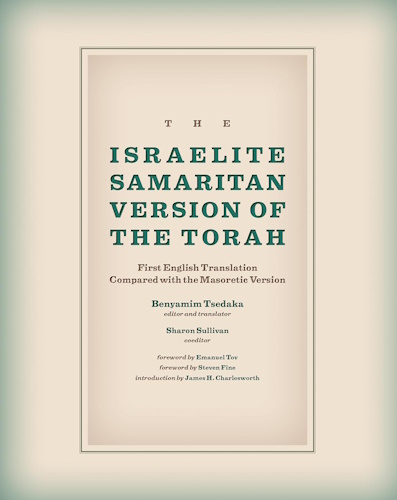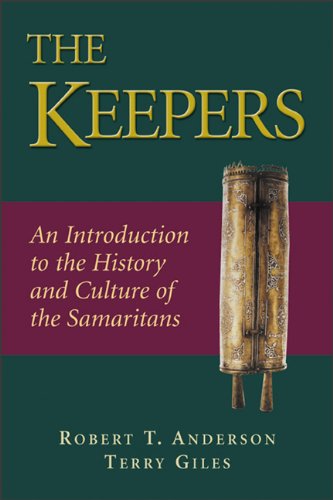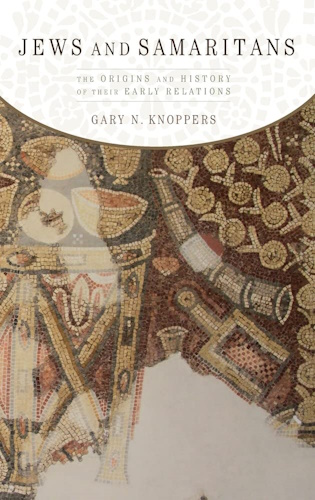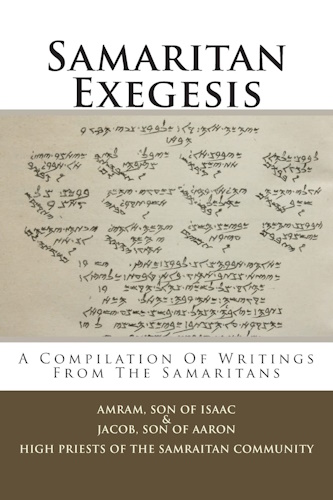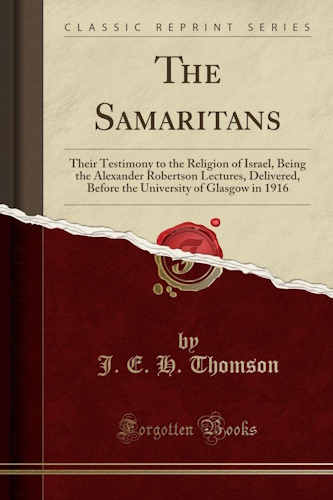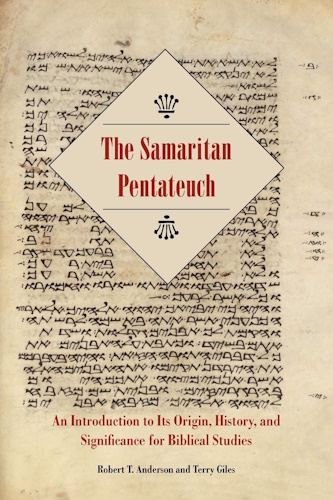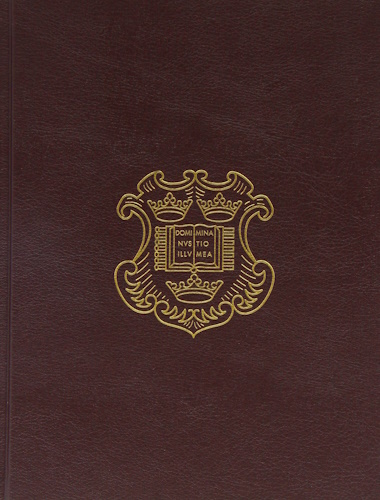![]()
Ancient Struggle Over Holy Land Supremacy
by
Matthias Schulz
-
translated from the German
by Paul Cohen
![]()
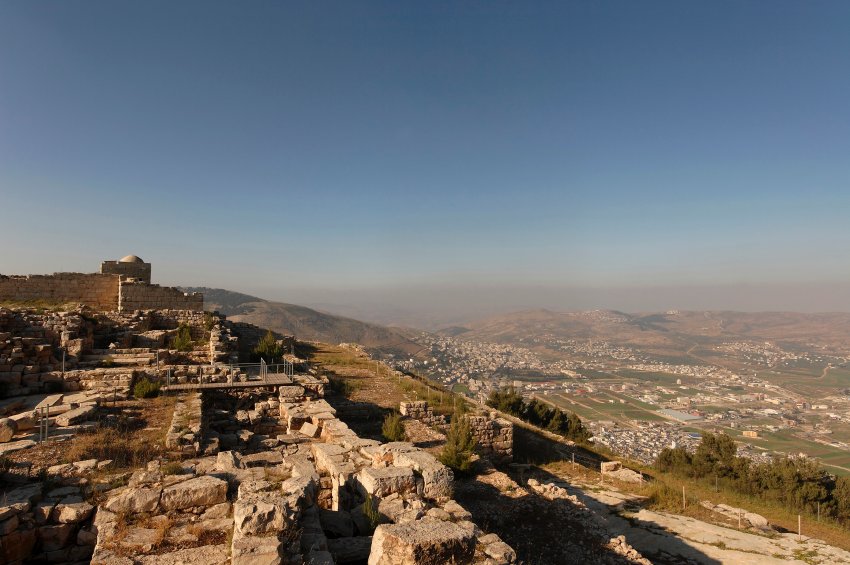
Clad in gray coat, Aharon ben Ab-Chisda ben Yaacob, 85, is sitting in the dim light of his house. He strikes up a throaty chant, a litany in ancient Hebrew. He has a full beard and is wearing a red kippah on his head.
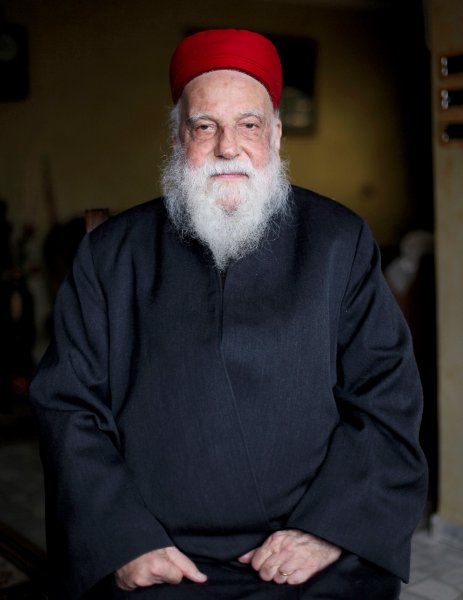
The man is a high priest -- and his family tree goes back 132 generations. He says: "I am a direct descendent of Aaron, the brother of the prophet Moses" -- who lived perhaps over 3,000 years ago.
Ab-Chisda is the spiritual leader of the Samaritans, a sect that is so strict that its members are not even allowed to turn on the heat on the Sabbath. They never eat shrimp and only marry among themselves. Their women are said to be so impure during menstruation that they are secluded in special rooms for seven days.
Outside, on the streets of Kiryat Luza, near Nablus, a cold wind is blowing. The village lies just below the summit of Mount Gerizim. There's a school, two shops and a site for sacrifices. This is home to 367 Samaritans. It's a small community.
Everyone here is required to attend religious services in the synagogue on Saturdays. "Every baby boy has to be circumcised precisely on the eighth day," says the high priest -- not beforehand, and not afterwards.
Most important of all: the sect only believes in the written legacy of Moses, the five books of the Pentateuch, also commonly known as the Torah. They reject all other scripture from the Bible.
Once in the Majority
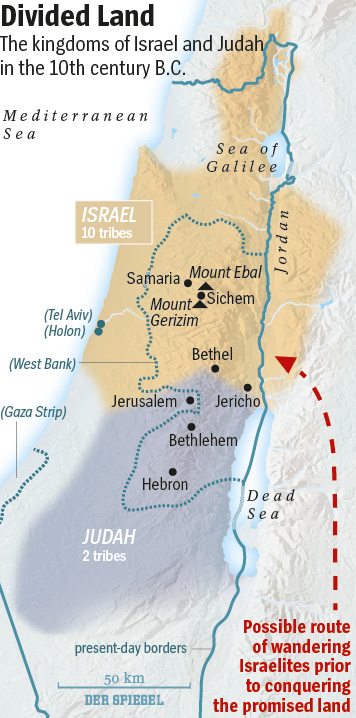
From a historical perspective, the Samaritans and the Jews have a common lineage. The Old Testament recounts that 10 of the 12 tribes in the region of Samaria founded the state of Israel in the year 926 BC. The two other clans lived farther south, in the mountainous region of Judah, with its capital Jerusalem.
In other words, the Samaritans were once in the majority. In ancient times, there were 300,000 of them -- perhaps even over a million. But their strictest law almost led to their downfall. It states: "None of you may settle outside the promised land."
As a result, while the Jews fled across the globe to escape the cruelty of foreign rulers, their relatives persevered in the land of their forefathers and suffered under Byzantine tyrants and merciless sultans. At the end of World War I, there were only 146 of them.
"Today we are doing better," says Ab-Chisda cheerily, as he gazes out the window. Now, together with another group in Holon near Tel Aviv, this religious community consists of 751 individuals.
But this population increase only took place because they broke with age-old traditions and rescinded the ban against mixed marriages. In 2004, five Jewish women from Ukraine and one from Siberia, all of them ready and willing to get married, were accepted into the community.
Nevertheless, due to inbreeding, they have a wide range of genetic defects. Trade journals have published studies on the forgotten children of God. They often suffer from muscle weakness and Usher syndrome, also known as deafblindness.
A Grim Fate

But their religion is alive and well. They all gather for Passover, a holiday where the men wear white robes and perform a great animal sacrifice.
During the ceremony, a priest cuts the throats of 50 lambs. Streams of blood flow through a stone channel into a hole, where they are burnt along with the intestines. The meat, which is cooked in a large earthen oven, must be completely consumed during the night -- otherwise it becomes unkosher.
But where do these archaic people come from?
It is a question that intrigues an increasing number of religious scholars. Recent discoveries show that the Samaritans suffered a grim fate. They were once the guardians of the Ark of the Covenant and the keepers of the Mosaic tradition. But then they became the victims of a smear campaign.
His hair windblown, Stefan Schorch stands in front of the synagogue in Kiryat Luza. An expert on the Old Testament, Schorch hails from the University of Halle-Wittenberg in eastern Germany and comes here often -- usually armed with a tape recorder. He works like an ethnologist would when studying a remote indigenous tribe.
Above all, Schorch is looking for sacred books.

It's 7:30 a.m., and a priest unlocks a small house of worship and disappears into a niche behind a heavy red curtain. Inside stands a safe filled with old volumes of the Pentateuch. "Unbelievable," says the researcher, as he leafs through "a completely preserved edition from the 14th century." He photographs each page of the tome. Then the priest locks it away again.
'One Main Difference'
There was a time when nearly every affluent family possessed such a precious handwritten book. Some of them reached Europe. Now, the professor, who comes from the historic birthplace of Martin Luther's Reformation, studies these texts, checking them line by line, and word by word. And he compares the Samaritan Torah with the Jewish version.
"Actually there's only one main difference," he says. Among the Jews, Jerusalem is the world's religious epicenter, whereas for the Samaritans it's Mount Gerizim.
But which Torah is the original? Until recently, the generally accepted school of thought was as follows: In the fourth century BC, the Samaritans split off as a radical sect. In the Bible, they appear as outsiders and idol worshipers; they are evil. The parable of the "good Samaritan" (Luke 10:25-37) offers a rather atypical portrayal of a member of this sect.
The historian Titus Flavius Josephus, himself a Jew, mentions that the apostates erected a shrine "in all haste" in the year 330 BC, as a rather dilettantish attempt to emulate the Temple in Jerusalem.
Increasingly, though, it looks as though the Bible has handed down a distorted picture of history. Papyrus scrolls recovered from Qumran on the Dead Sea, as well as a fragment of the Bible that recently surfaced on the market for antiquities, necessitate a "complete reassessment," says Schorch.
Part 2: The Site of the Original Temple
Yet the most exciting indication of how history actually transpired has now been unearthed by Yitzhak Magen. Working behind security fences, the archaeologist has been digging on the windswept summit of Mount Gerizim.
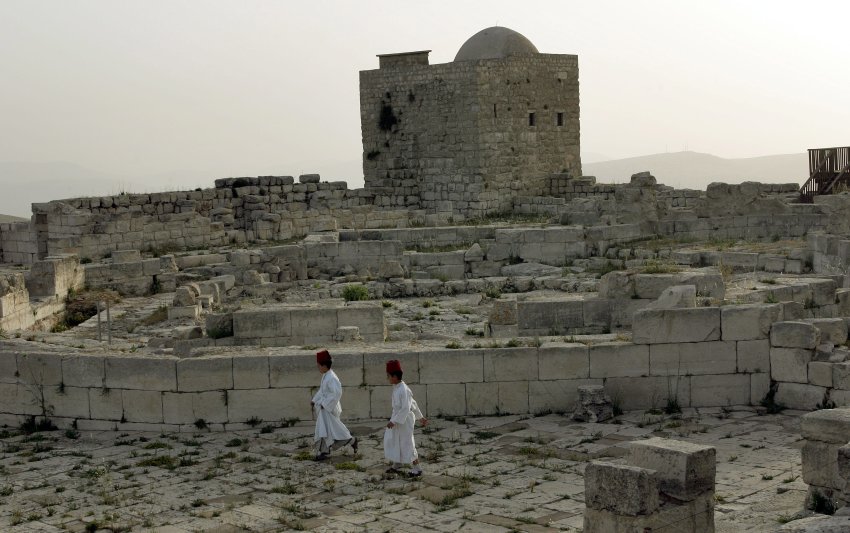
His findings, which have only been partially published, are a virtual sensation: As early as 2,500 years ago, the mountain was already crowned with a huge, dazzling shrine, surrounded by a 96 by 98-meter (315 by 321-foot) enclosure. The wall had six-chamber gates with colossal wooden doors.
At the time, the Temple of Jerusalem was, at most, but a simple structure.
Magen has discovered 400,000 bone remains from sacrificial animals. Inscriptions identify the site as the "House of the Lord." A silver ring is adorned with the tetragrammaton YHWH, which stands for Yahweh.
All of this means that a vast, rival place of worship stood only 50 kilometers (31 miles) from Jerusalem.
It is an astonishing discovery. A religious war was raging among the Israelites, and the nation was divided. The Jews had powerful cousins who were competing with them for religious leadership in the Holy Land. The dispute revolved around a central question: Which location deserved the honor of being the hearth and burnt offering site of God Almighty?
Revising Holy Scripture
Researchers have a long way to go before they uncover all the details of this conflict. It's clear, however, that it was extremely acrimonious. Each side reviled the other. There was murder, mayhem and, ultimately, even the Holy Scripture was revised.
At first -- so much is clear -- the Samaritans had the upper hand. Indeed, compared with Jerusalem, Mount Gerizim enjoyed significantly older rights: In the great tale of the history of the chosen people, the mountain plays a key role.
Abraham, the progenitor of the Israelites -- who, according to legend, roamed through the Orient as a shepherd around 1500 BC -- stopped there because God had appeared to him in a wondrous vision. Later, Jacob the patriarch traveled there to build the original shrine.
In the fifth book of Moses, the mountain summit finally earns a prominent place in biblical history: After the flight from Egypt, the Israelites wandered through the Sinai desert for 40 years. At last, they reached the Jordan River from the east. Their old and weary leader gazed across the river to the promised land, where "milk and honey flow."
Shortly before his death, Moses issued an important command: The people must first travel to Mount Gerizim. He said that six tribes should climb it and proclaim blessings, while the other six tribes should proclaim curses from the top of nearby Mount Ebal. It was a kind of ritual taking possession of the promised land.
Finally, the prophet tells the Israelites to build a shrine "made of stones" on Mount Gerizim and coat it with "plaster." Indeed, he said, this is "the place that the Lord has chosen."
No Mention of a 'Chosen Place'
That, in any case, is what stands in the oldest Bible texts. They are brittle papyrus scrolls that were made over 2,000 years ago in Qumran, and have only recently been examined by experts.
In the Hebrew Bible, which Jerusalem's priests probably spent a good deal of time revising, everything suddenly sounds quite different. There is no longer any mention of a "chosen place."
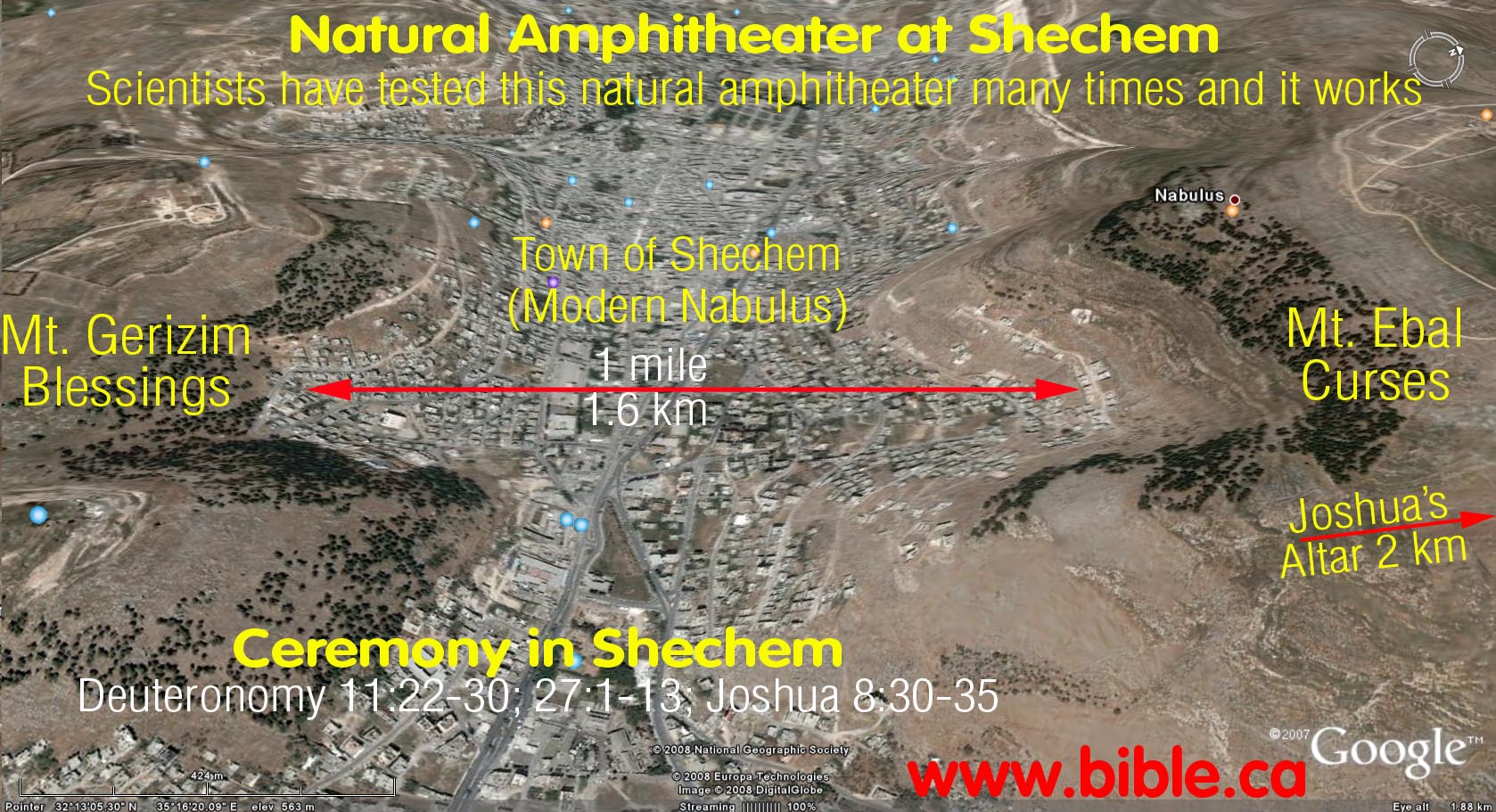
The word "Gerizim" has also been removed from the crucial passage. Instead, the text states that the Yahweh altar was erected on "Ebal." "By naming the mountain of the curses," says Schorch, "they wanted to cast the entire tale in a negative light, and deprive Gerizim of its biblical legitimacy."
Schorch dates the intervention to around 150 BC. The researcher stops short of calling it fraud, though, preferring to label it an "adaptation of the Bible to their own religious view."
But why was this ruse ultimately successful? Why did the minority win out? Didn't the opponent have the more populous country? A palace already stood in their capital city, Samaria, in the year 1000 BC. Ivory has been found there. At the time, Jerusalem was still little more than a village, with barely 1,500 inhabitants.
Researchers have solved this puzzle, and the answer even has a face: It sports a curly beard and wears a bronze helmet. Starting in the year 732 BC, the Assyrians used their chariots to advance to the Mediterranean and subjugate the state of Israel. The inhabitants were either impaled or taken into captivity.
This devastated the country. The land of the Lord had been overrun by violent hordes. Many fled to their cousins in Judah. Jerusalem's population soared to 15,000.
Drinking and Whoring Heathens
Strengthened by this influx, the priests there decided it was time for them to play the leading role in religious matters. Only a few years after the invasion, King Hezekiah persuaded all Israelites -- Jews and Samaritans alike -- to make a pilgrimage to Jerusalem. He said this was the only place that still retained the freedom and purity to worship the Almighty. The neighboring country was, of course, occupied by drinking and whoring heathens.
To underscore their claim, the Jewish people wove an entire biblical tale around their small, southern kingdom. According to this story, around 1000 BC the biblical King David ruled from Jerusalem over a glorious kingdom. His son Solomon allegedly built in the city a temple made of cedar, "completely overlaid with gold." According to the Bible, over 180,000 workers toiled to build it.
Total nonsense: Not a single shred of archaeological evidence has ever been found to confirm the existence of Solomon's Temple.
The goal of the deception was clear, though: Judah's priests sought to magnify the glory of their own city. And they passed up no opportunity to vilify their rivals: In the Bible the Samaritans were nearly always portrayed as unsavory characters. They were also said to be ethnically impure because their blood had supposedly been mixed with that of foreign colonialists.
The book of Ezra even recounts that these "enemies" tried to hinder the reconstruction of the destroyed Temple of Jerusalem -- out of pure envy, because they didn't have one of their own.
In reality, though, at that time, a shining divine fortress had already stood for many years on Mount Gerizim. Magen, the archaeologist, has discovered jewelry, silver, a fine cosmetics set and a small golden bell from the splendid robe of a high priest.
Living in Peace
Around the year 180 BC, the ceremonial building grew to a size of roughly 200 by 200 meters. The Samaritans added a monumental staircase and rooms for "thousands of pilgrims." There were apparently huge crowds of devout visitors. None of this is mentioned in the Bible.
The dispute finally came to a head. In the year 128 BC, John Hyrcanos, a Jewish prince, ascended Mount Gerizim with an army and burned the proud sanctuary to the ground. Archaeologists have found a "burn layer" along with arrow heads, swords, daggers and lead missiles for slings.
The Samaritans never rebuilt their temple. From then on, the victors wrote the (biblical) history books and forced their rivals into oblivion.
And yet the "guardians of the law," as they call themselves, still exist today. When Mark Twain visited the region in 1867, he encountered the "sad, proud remnant of a once mighty community," which he stared at "just as one would stare at a living mastodon."
Today, this astounding religious community is better off. They have a seat in the Palestinian parliament and they maintain contacts with the United Nations. "We want to live in peace with everyone," says the high priest Ab-Chisda.
Despite their tragic history, the spiritual leader has not lost his sense of humor. In response to the question as to what the Samaritan paradise looks like, the old man hesitated briefly. Then, he said mischievously: "It must be a wonderful place. Nobody has ever returned to make a complaint."
![]()
![]()
Disclaimer:
Some material presented will contain links, quotes, ideologies, etc., the contents of which should be understood to first, in their whole, reflect the views or opinions of their editors, and second, are used in my personal research as "fair use" sources only, and not espousement one way or the other. Researching for 'truth' leads one all over the place...a piece here, a piece there. As a researcher, I hunt, gather and disassemble resources, trying to put all the pieces into a coherent and logical whole. I encourage you to do the same. And please remember, these pages are only my effort to collect all the pieces I can find and see if they properly fit into the 'reality aggregate'.
Personal Position:
I've come to realize that 'truth' boils down to what we 'believe' the facts we've gathered point to. We only 'know' what we've 'experienced' firsthand. Everything else - what we read, what we watch, what we hear - is what someone else's gathered facts point to and 'they' 'believe' is 'truth', so that 'truth' seems to change in direct proportion to newly gathered facts divided by applied plausibility. Though I believe there is 'truth', until someone representing the celestial realm visibly appears and presents the heavenly records of Facts And Lies In The Order They Happened, I can't know for sure exactly what "the whole truth' on any given subject is, and what applies to me applies to everyone. Until then I'll continue to ask, "what does The Urantia Book say on the subject?"
~Gail Bird Allen
![]()
![]()

